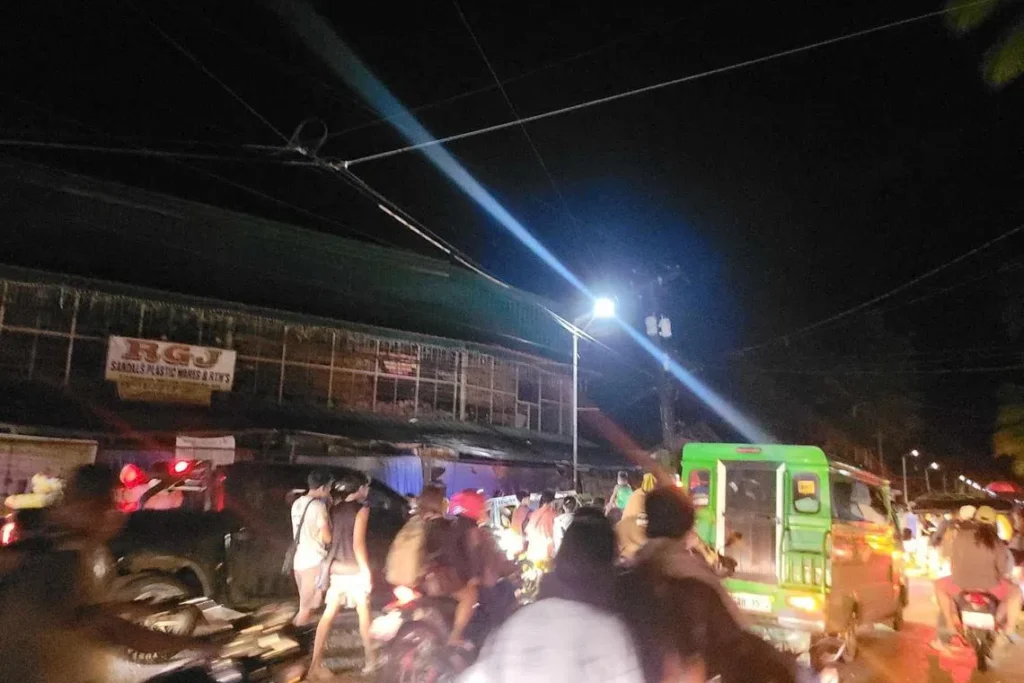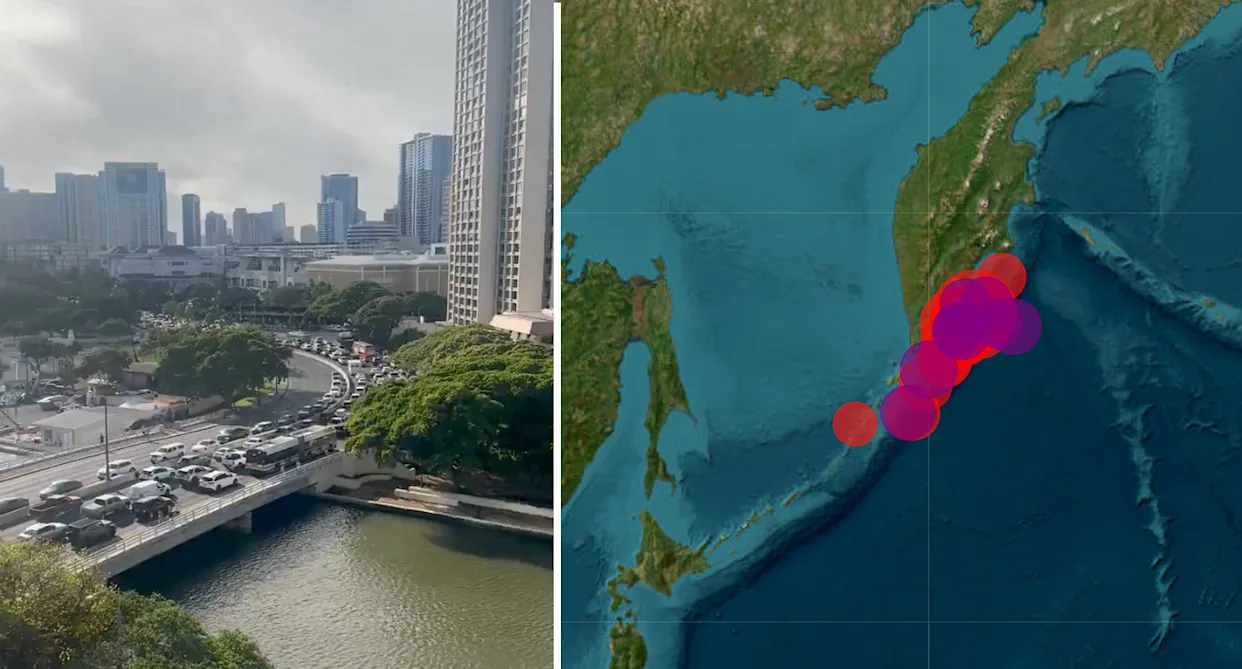Manila, Philippines (October 10, 2025) A powerful magnitude 7.6 earthquake struck off the southern coast of the Philippines early Friday, shaking homes, cutting power, and prompting urgent tsunami warnings across multiple coastal provinces. Authorities have described the situation as “life-threatening,” urging thousands of residents to flee low-lying areas and seek higher ground.
The quake, which hit near Davao Oriental province, was recorded at a shallow depth of about 10 kilometers beneath the seabed a level that makes the tremor particularly dangerous and capable of triggering destructive sea waves. The Philippine Institute of Volcanology and Seismology (PHIVOLCS) confirmed that the quake’s epicenter was off the coast near the town of Manay, a region often vulnerable to seismic activity due to its position on the Pacific Ring of Fire.
A Sudden Tremor That Shook an Entire Region
Residents described the earthquake as “the longest and strongest” they had felt in years. Many were jolted awake in the early morning hours as walls cracked, furniture toppled, and lights flickered. Within minutes, authorities issued emergency tsunami alerts, warning that waves up to three meters high could hit coastal areas within the next hour. Witnesses from Davao Oriental and Surigao del Sur reported seeing the sea briefly recede a classic early sign of an approaching tsunami.
Panic spread through fishing communities as residents rushed to gather loved ones and move to higher ground. Local governments activated sirens and deployed police and rescue teams to assist in evacuations.
Tsunami Warnings and Immediate Evacuations
The Pacific Tsunami Warning Center (PTWC) and PHIVOLCS both warned that “life-threatening wave heights” could impact not just the Philippines but also parts of Indonesia, Palau, and northern Malaysia.
Evacuation orders were swiftly issued for seven coastal provinces, including Eastern Samar, Dinagat Islands, Davao Oriental, Southern Leyte, Surigao del Norte, Leyte, and Surigao del Sur. Residents were urged to stay away from beaches, harbors, and river mouths until authorities declared it safe.
Fishing boats were told to remain at sea in deeper waters, while vessels docked near the coast were instructed to move inland or be secured. Officials warned that the first tsunami waves could arrive within an hour and that the danger might continue for several hours due to multiple wave surges.
Aftershocks and Unconfirmed Damage Reports
As of this writing, no confirmed fatalities have been reported, but minor injuries and structural damage to homes, bridges, and roads have been noted in Mindanao’s eastern regions. Power outages were also reported in several towns following the quake.
Authorities say the situation remains highly dynamic, with continuous aftershocks — some above magnitude 5 being recorded in the hours after the main tremor. Emergency teams are currently assessing the extent of damage and monitoring potential landslides in mountainous areas already weakened by recent rainfall.
Why the Philippines Faces Such High Seismic Risk

The Philippines is one of the most disaster-prone countries in the world, located along the Pacific Ring of Fire, where several tectonic plates meet. This region experiences frequent earthquakes and volcanic eruptions due to constant geological movements beneath the Earth’s crust.
In fact, the country has a tragic history of deadly quakes. The 1976 Moro Gulf earthquake, also in Mindanao, had a magnitude of 8.0 and triggered tsunamis that killed over 8,000 people. Today’s tremor, though smaller, serves as a chilling reminder of that historic disaster — and why continued preparedness is essential.
What People Should Do Now
Authorities are urging the public to remain calm but vigilant. Here are the key safety steps emphasized by PHIVOLCS and disaster response agencies:
- Move to higher ground immediately if you are near the coast or in a tsunami-prone area.
- Stay away from beaches and harbors, even if the sea looks calm. Tsunami waves can strike in multiple surges hours apart.
- Do not return home until authorities officially declare the area safe.
- Avoid using bridges, cliffs, or damaged roads, as aftershocks could make them unsafe.
- Stay tuned to official news sources for real-time updates instead of relying on social media rumors.
Emergency shelters have been opened in several provinces, offering food, water, and temporary housing for evacuees.
Global Reactions and Ongoing Monitoring
International organizations, including the United Nations Office for Disaster Risk Reduction (UNDRR), have expressed concern and offered assistance. Neighboring countries are also on alert, closely monitoring sea level changes and local seismic activity.
Experts say this event highlights the importance of early warning systems, community drills, and disaster education tools that have already saved countless lives in recent years. “Preparedness makes the difference between survival and tragedy,” said a PHIVOLCS spokesperson during a press briefing.
A Nation on Edge, but United
As the sun rises over Mindanao, scenes of people helping one another carrying children, guiding the elderly, and sharing supplies reveal a nation used to hardship but driven by resilience. The fear remains real, yet so does the spirit of solidarity that defines the Filipino people.
While it may take days to fully understand the impact of this quake, one thing is certain: the Philippines once again stands at the frontline of nature’s power and its people, as always, are standing strong.









